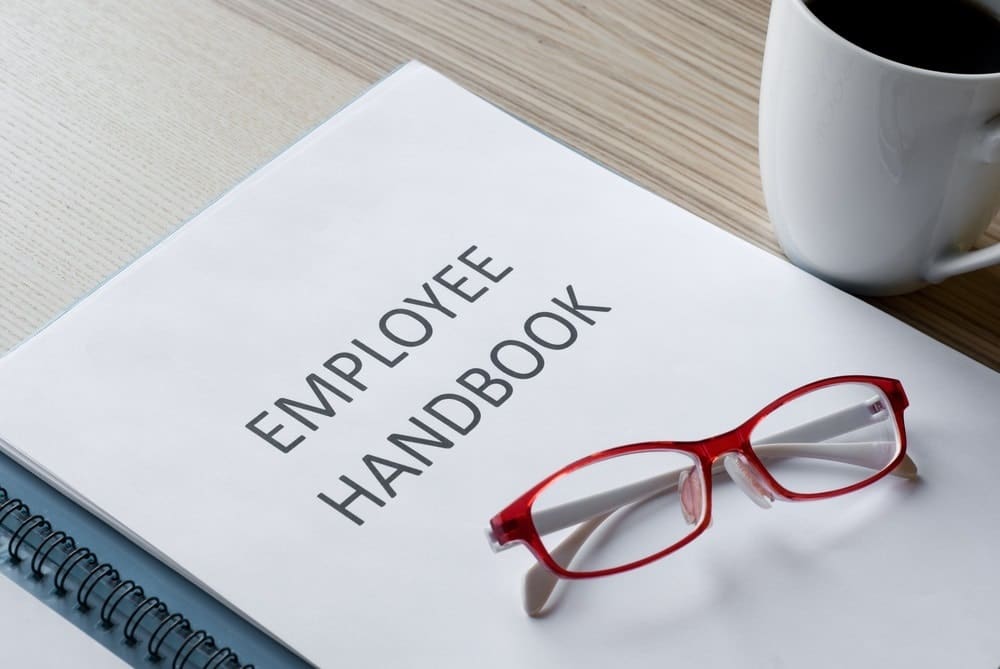Do’s and Don’ts for Every Employer
Many employers use an employee handbook to communicate workplace policies to the workforce. Employers should, however, be aware of the measure of risk in drafting and distributing handbook policies that are poorly written or not compliant with applicable federal, state or local law. Melissa Boyce of XpertHR discusses best practices to ensure the employee handbook is legally compliant and best serves the organization.
The employee handbook, one of the most common and widespread workplace documents, serves as a tool to communicate to employees the employer’s position on certain employment-related matters. However, there is some measure of risk in implementing an employee handbook and having the employer commit to workplace policies in writing.
A poorly written employee handbook may legally obligate an employer to take a certain course of action, limit the actions an employer may take or create confusion among employees and supervisors. Further, an employee handbook may expose an employer to liability if it is not updated frequently to comply with the latest legal developments or if the employer fails to uniformly and consistently apply the workplace policies.
Determining what topics to cover in an employee handbook is a complex task, but it’s one of the most important decisions an employer must make. The topics an employer chooses to omit from the handbook are almost as important as the topics it chooses to address and incorporate into workplace policies.
Determining What Policies to Include
Do:
- Begin with a brief overview of the business or organization, the main products or services it offers and its goals and values.
- Include a disclaimer that is clear and conspicuous and states that the handbook is not a contract, does not alter employment at-will status and is subject to change.
- Make sure the discrimination and harassment provisions of the employee handbook cover all categories protected by applicable federal, state and local law. It may be best practice to be over-inclusive, as this will demonstrate that you foster a tolerant and diverse workforce. However, be sure to implement the policy consistently.
- Retain the right to change employee wages, hours and working conditions without consultation and agreement, subject to any employment agreements or collective bargaining agreements.
Don’t:
- Be too specific when discussing employee benefits (e.g., health benefits), as these may change from year to year.
- Forget to include any legally required policies, such as a Family and Medical Leave Act (FMLA) policy if the organization has 50 or more employees.
- Overlook differences in federal, state and local law.
- Forget to be specific when describing the confidential information and trade secrets you seek to protect. Consider using additional confidentiality agreements and noncompete agreements to further memorialize employee obligations.
- Neglect to include information on leaving the company and how resignations, terminations and retirements will be handled.
Creating an Employee Handbook as a Multistate Employer
A multistate employer often faces unique challenges in creating an employee handbook. If you are a multistate employer operating in different states, your employee handbook must address and comply with the law of each state and municipality where you have employees working.
If you are a multistate employer, you should consider the following:
Do:
- Adopt the approach that is best for the business as a whole. You can:
- implement uniform policies across all states with the most generous and lenient employee rights and benefits,
- provide a general national handbook and state-specific supplements or addenda to capture state and local differences,
- prepare a very general handbook indicating that the employer will follow all applicable federal, state and local laws or
- prepare a specific handbook for each jurisdiction.
- Be sure to address state-specific (and often, municipality-specific) aspects of topics such as discrimination and harassment, leaves, equal pay, meal and rest breaks, workplace accommodations, weapons in the workplace, smoking and cell phone use while driving.
- Take into account that states and municipalities often change their laws at a much more rapid pace than the federal government. Therefore, policies affected by state and local law may need to be frequently reviewed and updated.
Don’t:
- Forget to include notices required by state or local laws in the employee handbook if you are required to do so.
- Neglect to address state or municipal differences, even if you have only one employee working in that particular state or municipality. The threshold for complying with many laws is just one employee.
Properly Executing the Employee Handbook
While there are legal and business risks inherent in maintaining an employee handbook, it is still of utmost importance to have one, because – when executed properly – the benefits far outweigh the risks.
If you choose to have an employee handbook, it is critical to follow through in implementing and enforcing it.
Follow these guidelines when creating and implementing an employee handbook:
- Keep current on legal requirements and trends.
- Include a clear and conspicuous disclaimer that the handbook is not a contract.
- Obtain a written acknowledgement and consent from each employee that they have reviewed, read and understand the handbook.
- Address multistate aspects, if applicable.
- Think of the handbook as a living document that will evolve as law, society and your organization changes.
- Leave room for flexibility.
- Address differences in federal, state and local law.
- Consider having the employee handbook reviewed by an attorney to make sure it is legally compliant.
There are many reasons why you may want to develop and implement an employee handbook. Aside from the fact that a handbook allows you to document, compile and retain all employment-related policies in a single document, it can also create uniformity and consistency. It also minimizes the risk of a misunderstanding between supervisors and employees by providing clear guidance on company policies.



 Melissa Gonzalez Boyce, JD is Legal Editor at
Melissa Gonzalez Boyce, JD is Legal Editor at 







